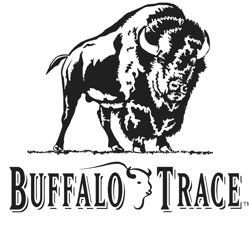
George T. Stagg
Photograph of George T. Stagg, courtesy of Buffalo Trace
"The Ultimate Salesman"
George Thomas Stagg was born in 1835 in Garrard County, near the town of Lancaster, Kentucky, in the central part of the state. He is one of the founding fathers of what is now the Buffalo Trace Distillery in Frankfort. Stagg’s role in the bourbon industry had an impact that is still being felt today.
Stagg’s ancestry is of Dutch Reform and can be traced back to Holland. His family originally emigrated to Bergen County, Pennsylvania, where his great-grandfather had been a Regimental Commander in the New Jersey Militia during the Revolutionary War. George’s father, Samuel, moved to Kentucky and bought the farm where George and his six siblings grew up. However, according to the 1840 census, the Stagg family was living in Platte, Missouri.
In 1849, George’s mother died, and his father remarried shortly after; in 1852, his father, Samuel, also passed away. In 1858, Stagg married Elizabeth "Bettie" Doolin. The newlyweds settled in Richmond, Kentucky, where George became a fairly successful traveling shoe salesman.
In 1861, George T. Stagg enlisted in the Union Army for service in the Civil War. His religious views on slavery likely influenced his decision to join the Union, despite Kentucky's divided loyalties. He served in the 21st Kentucky Infantry Regiment, seeing combat in key battles. He rose through the ranks from enlisted man to Captain, serving as an Aide-de-Camp to General Ambrose Burnside by 1863.
When the War was over in 1865, Stagg moved his family to St. Louis, Missouri. Not wanting to return to shoe sales, Stagg transitioned from the army to the whiskey business. Before long, Stagg formed a partnership with a merchant named James Gregory, establishing "Gregory & Stagg, Commercial Merchants & Distillers' Agents". This allowed him to sell Kentucky whiskey nationwide and build connections with prominent distillers, including E.H. Taylor, Jr. These early relationships laid the foundation for his later success in the whiskey industry.
In 1873, a worldwide, severe financial downturn threw many previously successful distillers into serious financial trouble. Among these was Colonel Edmund Haines Taylor, Jr., considered the king of Kentucky bourbon. The Louisville Courier-Journal reported that in June 1877, Taylor owed Gregory & Stagg’s firm $150,000 (the equivalent to four million dollars today).
Stagg saw Taylor’s financial plight as an opportunity. Up to this time, he had been considered a gifted salesman, a pitchman for Kentucky whiskey, but not a real player in the industry. Stagg set out to change all that, and the two partners paid off Taylor’s loans, gaining control of the Colonel’s two distilleries, located adjacent to each other on the Kentucky River at Leestown on the Frankfort Turnpike. One was known as the O.F.C. (Old Fire & Copper) Distillery and the other, the Carlisle Distillery, named for John G. Carlisle, then a congressman from Kentucky, later Secretary of the Treasury.
Stagg recognized that keeping Taylor and especially his name associated with the enterprises was important. He established the E. H. Taylor Jr. Company in 1879, with himself as president and Taylor as vice president. Stagg had 3,448 of 5,000 shares in the company; he gave Taylor, who was overseeing one of the distillery operations, the remaining 1,552 of the company shares.
During the six years that Taylor was working for Stagg, relations between them deteriorated sharply. By late 1886, the Colonel was straining to exit the company. Tired of dealing with Stagg’s stubborn personality, in return for returning Taylor’s share of the stock, Stagg traded him a third distillery he had acquired. That distillery later became known as the “Old Taylor Distillery.”
Although he took Taylor’s name off everything related to his holdings, Stagg reportedly still believed that the Colonel’s reputation for quality whiskey had spread beyond Kentucky to the entire Nation and throughout the world, and so using Taylor’s name on the corporate letterhead might be significant. Taylor was outraged and began a series of costly lawsuits against Stagg. When the last of these court actions was settled in 1890, the company had adopted the name George T. Stagg and Co. Finally, the shoe salesman turned distiller had his name at the forefront of the Kentucky whiskey industry.
With Taylor’s departure, Stagg’s workload increased dramatically. He was now running two distilleries that were in over-production mode, yet his company had dropping sales—whiskey prices were going down, taxes were outrageous, and government authorities were a constant annoyance. Moreover, his health was failing. By the early 1890s, Stagg had retired. Stress and pressure finally did in George T. Stagg, and he died in 1893 at the age of only 58.
Industry experts and fans of bourbon at the time knew that Stagg's Distillery was “a plus one in class and ultra taste.” In fact, it was once called "The Best of The Best." Stagg’s salesmanship and stewardship of the business made his distillery into the world’s leading bourbon producer. In 1904, the distillery’s name was changed again, this time to "The George T. Stagg Distillery," which is a moniker that lasted for over a century. In the year 2000, when Stagg’s distillery was 110 years old, Whisky Advocate Magazine named the factory "Distillery of the Year".
Contributed by Colonel Craig Duncan, Columbia, Tennessee
Two current Stagg brands in Buffalo Trace’s portfolio: George T. Stagg, Barrel Proof Bourbon (nicknamed “HazMat” due to its extremely high proof); and Stagg “Junior” (now commonly called simply “Stagg”).




